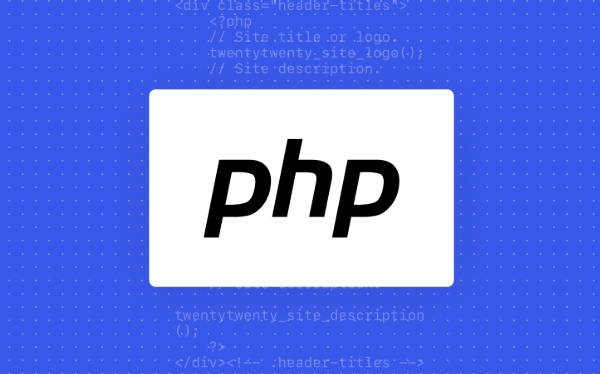The header location jump failure is usually caused by the output being triggered in advance or the logic is not executed to the jump. 1. Make sure there is no output before the header, including spaces, BOM characters and echo/print statements; 2. Check whether the form method and action are correct, and confirm that the logical branch is executed to the jump position; 3. Add exit/die to the header and terminate the subsequent code; 4. Use JS jump temporarily to replace but not recommended solution if necessary. Solve the output, logic and termination statements in order.

The PHP header location jump failed after form submission, which is quite common in development. Generally speaking, either the code is written incorrectly or the output is triggered in advance, causing the header to be unable to send normally.

There cannot be any actual output before outputting the content
header() function of PHP must be called before any actual output, otherwise it will fail. This means that you cannot have any HTML, spaces, echo, print or error message output before executing header("Location: xxx") .
Common situations include:

- There are blank or BOM characters in front of the file
- I accidentally used echo, print_r, var_dump in front of the header
- PHP error message is displayed (such as notice or warning)
For example, if you wrote code like this:
<?php
echo "Processing...";
if ($_SERVER['REQUEST_METHOD'] === 'POST') {
header("Location: thanks.php");
exit;
}
?> Then this echo will cause the header to fail. The solution is simple: make sure there is no output before the header.

Is the form submission logic executed correctly?
Sometimes the jump does not take effect, it is not a grammatical problem, but the logic has not reached the header step. for example:
- The form is not submitted correctly to the current script
- The conditional judgment is not valid and the jump branch is not entered
- Incorrect judgment of the submission method (for example, only POST is judged, but it is actually GET submission)
You can check the following points:
- Is
method="post"and action addresses of the form correct? - Whether there is a judgment like
if ($_SERVER['REQUEST_METHOD'] === 'POST') - Whether other logical processing was done before jumping caused the process to be interrupted
A simple test method is to add a sentence die("Here"); before the jump to see if the page outputs this sentence. If there is no output or an error is reported, it means that the execution has not ended here at all.
Use exit or die to ensure that subsequent code stops
Even if you write header("Location: ...") , if there is still code behind it, it may result in unexpected results. Therefore, it is recommended to add:
exit; // or die;
This prevents subsequent code from continuing to run and avoids some potential problems.
Alternative: Jump with JavaScript (not recommended but available)
If you really can't handle the header problem, you can also consider using JS to implement jumps. Although it is not as clean as the header, it can at least be "temporary emergency":
echo '<script>window.location.href = "thanks.php";</script>'; exit;
However, this is just a temporary solution, and ultimately, we must check the root cause of the header problem.
Basically, these common causes and solutions. These types of issues are usually not complicated, but details are easily overlooked. When encountering, check the output, logic and termination statements in order, which can generally be done.
The above is the detailed content of PHP header location not working after form submit. For more information, please follow other related articles on the PHP Chinese website!

Hot AI Tools

Undress AI Tool
Undress images for free

Undresser.AI Undress
AI-powered app for creating realistic nude photos

AI Clothes Remover
Online AI tool for removing clothes from photos.

Clothoff.io
AI clothes remover

Video Face Swap
Swap faces in any video effortlessly with our completely free AI face swap tool!

Hot Article

Hot Tools

Notepad++7.3.1
Easy-to-use and free code editor

SublimeText3 Chinese version
Chinese version, very easy to use

Zend Studio 13.0.1
Powerful PHP integrated development environment

Dreamweaver CS6
Visual web development tools

SublimeText3 Mac version
God-level code editing software (SublimeText3)

Hot Topics
 How to combine two php arrays unique values?
Jul 02, 2025 pm 05:18 PM
How to combine two php arrays unique values?
Jul 02, 2025 pm 05:18 PM
To merge two PHP arrays and keep unique values, there are two main methods. 1. For index arrays or only deduplication, use array_merge and array_unique combinations: first merge array_merge($array1,$array2) and then use array_unique() to deduplicate them to finally get a new array containing all unique values; 2. For associative arrays and want to retain key-value pairs in the first array, use the operator: $result=$array1 $array2, which will ensure that the keys in the first array will not be overwritten by the second array. These two methods are applicable to different scenarios, depending on whether the key name is retained or only the focus is on
 How to use php exit function?
Jul 03, 2025 am 02:15 AM
How to use php exit function?
Jul 03, 2025 am 02:15 AM
exit() is a function in PHP that is used to terminate script execution immediately. Common uses include: 1. Terminate the script in advance when an exception is detected, such as the file does not exist or verification fails; 2. Output intermediate results during debugging and stop execution; 3. Call exit() after redirecting in conjunction with header() to prevent subsequent code execution; In addition, exit() can accept string parameters as output content or integers as status code, and its alias is die().
 Applying Semantic Structure with article, section, and aside in HTML
Jul 05, 2025 am 02:03 AM
Applying Semantic Structure with article, section, and aside in HTML
Jul 05, 2025 am 02:03 AM
The rational use of semantic tags in HTML can improve page structure clarity, accessibility and SEO effects. 1. Used for independent content blocks, such as blog posts or comments, it must be self-contained; 2. Used for classification related content, usually including titles, and is suitable for different modules of the page; 3. Used for auxiliary information related to the main content but not core, such as sidebar recommendations or author profiles. In actual development, labels should be combined and other, avoid excessive nesting, keep the structure simple, and verify the rationality of the structure through developer tools.
 The requested operation requires elevation Windows
Jul 04, 2025 am 02:58 AM
The requested operation requires elevation Windows
Jul 04, 2025 am 02:58 AM
When you encounter the prompt "This operation requires escalation of permissions", it means that you need administrator permissions to continue. Solutions include: 1. Right-click the "Run as Administrator" program or set the shortcut to always run as an administrator; 2. Check whether the current account is an administrator account, if not, switch or request administrator assistance; 3. Use administrator permissions to open a command prompt or PowerShell to execute relevant commands; 4. Bypass the restrictions by obtaining file ownership or modifying the registry when necessary, but such operations need to be cautious and fully understand the risks. Confirm permission identity and try the above methods usually solve the problem.
 How to create an array in php?
Jul 02, 2025 pm 05:01 PM
How to create an array in php?
Jul 02, 2025 pm 05:01 PM
There are two ways to create an array in PHP: use the array() function or use brackets []. 1. Using the array() function is a traditional way, with good compatibility. Define index arrays such as $fruits=array("apple","banana","orange"), and associative arrays such as $user=array("name"=>"John","age"=>25); 2. Using [] is a simpler way to support since PHP5.4, such as $color
 php raw post data php
Jul 02, 2025 pm 04:51 PM
php raw post data php
Jul 02, 2025 pm 04:51 PM
The way to process raw POST data in PHP is to use $rawData=file_get_contents('php://input'), which is suitable for receiving JSON, XML, or other custom format data. 1.php://input is a read-only stream, which is only valid in POST requests; 2. Common problems include server configuration or middleware reading input streams, which makes it impossible to obtain data; 3. Application scenarios include receiving front-end fetch requests, third-party service callbacks, and building RESTfulAPIs; 4. The difference from $_POST is that $_POST automatically parses standard form data, while the original data is suitable for non-standard formats and allows manual parsing; 5. Ordinary HTM
 How to handle File Uploads securely in PHP?
Jul 08, 2025 am 02:37 AM
How to handle File Uploads securely in PHP?
Jul 08, 2025 am 02:37 AM
To safely handle PHP file uploads, you need to verify the source and type, control the file name and path, set server restrictions, and process media files twice. 1. Verify the upload source to prevent CSRF through token and detect the real MIME type through finfo_file using whitelist control; 2. Rename the file to a random string and determine the extension to store it in a non-Web directory according to the detection type; 3. PHP configuration limits the upload size and temporary directory Nginx/Apache prohibits access to the upload directory; 4. The GD library resaves the pictures to clear potential malicious data.
 How Do You Pass Variables by Value vs. by Reference in PHP?
Jul 08, 2025 am 02:42 AM
How Do You Pass Variables by Value vs. by Reference in PHP?
Jul 08, 2025 am 02:42 AM
InPHP,variablesarepassedbyvaluebydefault,meaningfunctionsorassignmentsreceiveacopyofthedata,whilepassingbyreferenceallowsmodificationstoaffecttheoriginalvariable.1.Whenpassingbyvalue,changestothecopydonotimpacttheoriginal,asshownwhenassigning$b=$aorp






